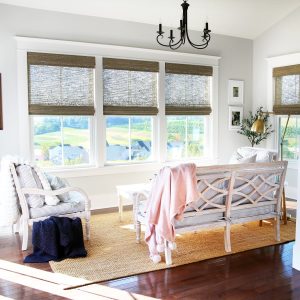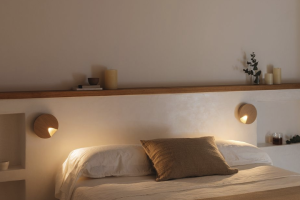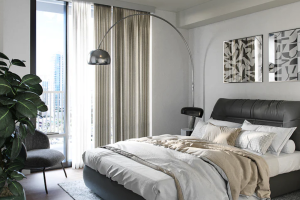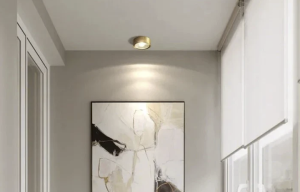Creating a Dreamy and Functional Children’s Bedroom: Tips and Ideas for Designing the Perfect Space
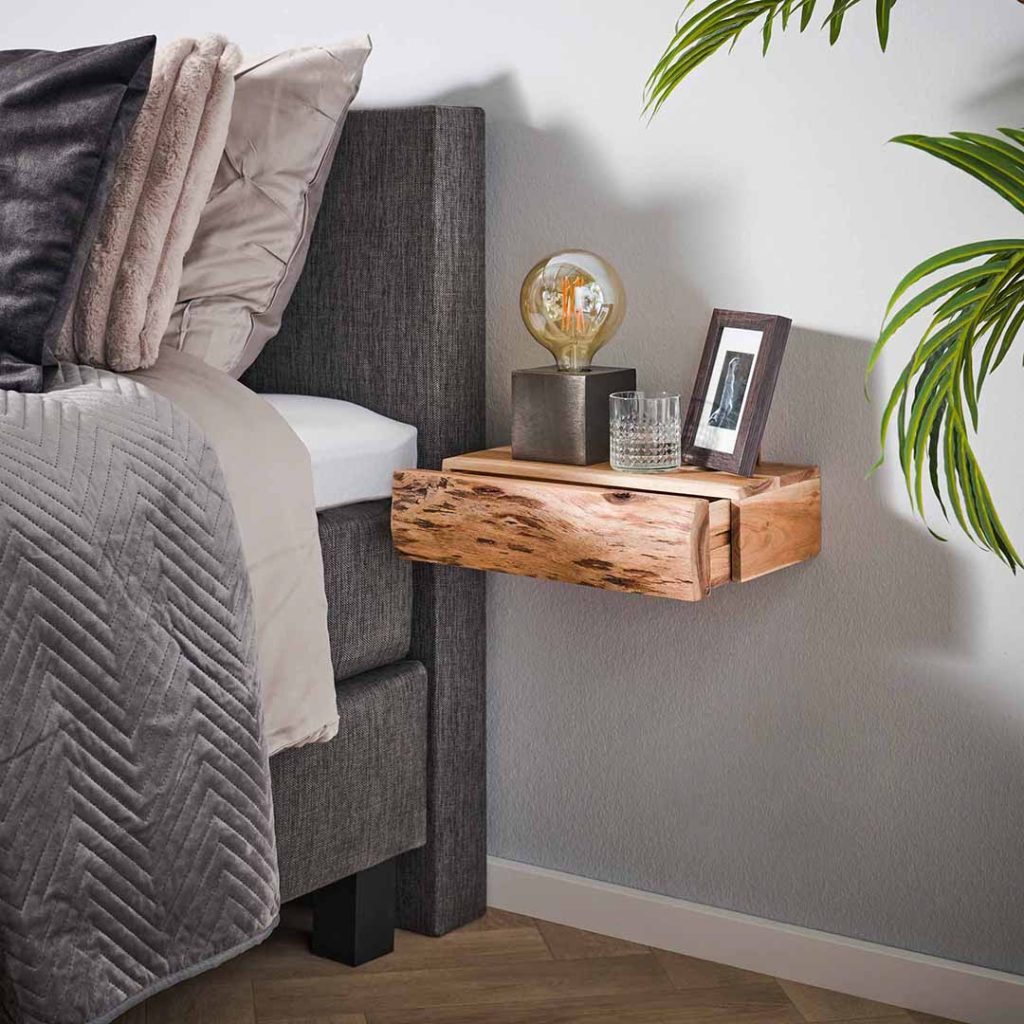
A well-designed children’s bedroom is essential for creating a nurturing and comfortable space for your child to grow and thrive. A thoughtfully designed bedroom can have a significant impact on a child’s sleep, behavior, and overall development. In this article, we will explore the importance of a well-designed children’s bedroom and provide tips and tricks for creating a space that is safe, comfortable, and appealing to your child’s needs and preferences.
Understanding the Importance of a Well-Designed Children’s Bedroom
A well-designed xyzlightings children’s bedroom offers numerous benefits for both the child and the parents. One of the most significant benefits is improved sleep. A bedroom that is designed with sleep in mind can help promote better sleep quality and duration. This is crucial for a child’s overall health and well-being, as adequate sleep is essential for growth, development, and cognitive function.
In addition to improved sleep, a well-designed children’s bedroom can also have a positive impact on a child’s behavior. A calm and organized space can help reduce stress and anxiety, leading to better behavior and emotional regulation. A clutter-free environment can also promote focus and concentration, making it easier for children to engage in activities such as homework or reading.
Furthermore, a child’s bedroom can play a significant role in their overall development. It is their personal sanctuary where they can explore their interests, express their creativity, and develop their sense of self. A well-designed bedroom can provide opportunities for learning, play, and self-expression, fostering their cognitive, social, and emotional development.
Choosing the Right Color Scheme and Theme for Your Child’s Bedroom
Color has a powerful impact on mood and behavior, making it an essential consideration when designing your child’s bedroom. Warm colors like reds, oranges, and yellows can create an energetic and stimulating environment, which may be suitable for play areas or activity zones. On the other hand, cool colors like blues, greens, and purples can create a calming and soothing atmosphere, which is ideal for sleep and relaxation.
When choosing a color scheme for your child’s bedroom, it is important to consider their preferences and personality. Involving your child in the decision-making process can help them feel a sense of ownership and pride in their space. You can also incorporate their favorite colors or themes into the design to make it more appealing and personalized.
Creating a Safe and Comfortable Sleeping Environment for Your Child
Creating a safe and comfortable sleeping environment is crucial for your child’s health and well-being. Start by choosing the right mattress and bedding that provide adequate support and comfort. A good quality mattress that is appropriate for your child’s age and size can promote healthy sleep posture and spinal alignment.
In addition to the mattress, consider investing in hypoallergenic bedding materials to reduce the risk of allergies or respiratory issues. Make sure to regularly wash the bedding to maintain cleanliness and freshness.
To create a safe sleeping environment, ensure that the room is free from hazards such as loose cords, sharp edges, or heavy furniture that could potentially topple over. Install window guards or safety locks to prevent falls or accidents. It is also important to keep the room at a comfortable temperature and ensure proper ventilation to promote quality sleep.
Maximizing Storage Space in a Small Children’s Bedroom
Many children’s bedrooms are small in size, which can pose challenges when it comes to storage. However, with some creativity and smart organization strategies, you can maximize the available space and create a clutter-free environment.
Utilize under-bed storage by investing in bed frames with built-in drawers or using storage containers that can slide under the bed. This is an excellent way to store items such as extra bedding, toys, or seasonal clothing.
Vertical space is often underutilized in children’s bedrooms. Install shelves or wall-mounted organizers to store books, toys, or decorative items. This not only maximizes storage space but also adds visual interest to the room.
An organized bedroom has numerous benefits for children. It promotes a sense of order and responsibility, teaches them valuable organizational skills, and reduces stress and anxiety. Encourage your child to participate in the organization process by assigning them age-appropriate tasks such as sorting toys or folding clothes.
Incorporating Play Areas and Activity Zones into Your Child’s Bedroom

Play is an essential part of a child’s development, and incorporating designated play areas and activity zones into their bedroom can provide them with opportunities for learning, creativity, and exploration.
Create a dedicated play area where your child can engage in imaginative play or build with blocks. This can be as simple as a small table and chairs or a play mat on the floor. Make sure to provide age-appropriate toys and materials that encourage open-ended play and stimulate their imagination.
If space allows, consider adding an activity zone where your child can engage in hobbies or interests such as arts and crafts, reading, or playing musical instruments. Provide adequate storage for supplies and materials to keep the area organized and easily accessible.
Decorating with Age-Appropriate and Child-Friendly Decor
When decorating your child’s bedroom, it is important to choose age-appropriate decor that is also safe and child-friendly. Avoid using small decorative items that could pose a choking hazard or breakable items that could cause injury.
Consider using removable wall decals or stickers instead of wallpaper or permanent paint to add visual interest to the room. This allows for easy updates as your child’s interests change over time.
Involving your child in the decorating process can be a fun and educational experience. Let them choose their favorite colors, themes, or characters to create a space that reflects their personality and interests. This not only fosters their creativity but also helps them develop decision-making skills.
Adding Personal Touches and Customization to Your Child’s Bedroom
Personalization is key when designing a child’s bedroom. Adding personal touches and customization can make the space feel more special and unique to your child.
Display your child’s artwork or crafts on the walls or shelves to showcase their creativity and boost their self-esteem. Frame their favorite photos or artwork to create a gallery wall that tells their story.
Consider creating a reading nook or cozy corner where your child can relax and unwind. Add comfortable seating, soft pillows, and blankets to create a cozy and inviting space. This can be a perfect spot for reading, daydreaming, or quiet play.
Making the Most of Natural Light and Artificial Lighting in Your Child’s Bedroom
Lighting plays a crucial role in a child’s bedroom. Natural light is not only beneficial for their health but also helps regulate their sleep-wake cycle. Maximize natural light by keeping windows unobstructed and using light-colored curtains or blinds that allow light to filter through.
In addition to natural light, artificial lighting is essential for creating a functional and inviting space. Use a combination of ambient, task, and accent lighting to provide adequate illumination for different activities.
Consider installing dimmer switches to adjust the lighting intensity according to your child’s needs. This can be particularly helpful during bedtime routines when you want to create a calm and soothing atmosphere.
Choosing the Right Furniture and Accessories for Your Child’s Bedroom
When choosing furniture and accessories for your child’s bedroom, it is important to prioritize functionality, safety, and durability. Invest in quality furniture that can withstand the wear and tear of daily use and will grow with your child.
Choose furniture with rounded edges or corners to minimize the risk of injury. Opt for non-toxic materials that are free from harmful chemicals such as formaldehyde or lead.
Consider incorporating multi-functional furniture pieces such as bunk beds with built-in storage or desks with adjustable heights. This not only maximizes space but also provides versatility and adaptability as your child’s needs change.
Maintaining a Clean and Organized Children’s Bedroom: Tips and Tricks for Parents
Maintaining a clean and organized children’s bedroom can be a challenge, but with some strategies and routines in place, it can become a manageable task.
Involve your child in the cleaning process by assigning age-appropriate tasks such as making the bed, picking up toys, or organizing books. This not only teaches them responsibility but also helps them develop important life skills.
Set up a cleaning schedule or routine to ensure that the bedroom is regularly tidied up. This can be done daily, weekly, or monthly depending on your child’s age and the level of organization required.
Provide adequate storage solutions such as bins, baskets, or shelves to keep toys, books, and clothing organized. Labeling containers or using picture labels can help younger children identify where items belong.
A well-designed children’s bedroom is essential for creating a nurturing and comfortable space for your child to grow and thrive. By understanding the importance of a well-designed bedroom and implementing the tips and tricks discussed in this article, you can create a space that promotes better sleep, behavior, and overall development for your child. Remember to involve your child in the decision-making process and personalize the space to reflect their interests and personality. With careful planning and attention to detail, you can create a space that your child will love and cherish for years to come.

